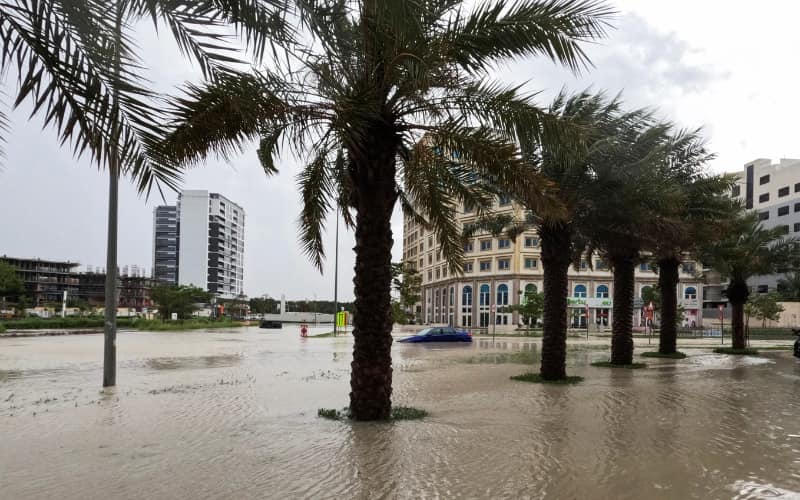Following unprecedented rainfall and widespread flooding in the United Arab Emirates (UAE), concerns have arisen regarding the local insurance sector’s capacity to handle the expected surge in motor and property damage claims, according to analysts at S&P Global Ratings.

Reuters
On April 15-16th, the UAE experienced the heaviest downpour since records began in 1949, resulting in widespread flooding, particularly impacting Dubai and causing significant travel disruption and damage.
Analysts at S&P Global Ratings predict that “claims relating to motor and property damage will make up the majority of losses for local insurers.”
While substantial motor claims are expected, S&P believes the insurance industry can manage the insured losses, given their distribution among numerous insurers, the prevalence of third-party insurance for damaged cars, and the likelihood of reinsurance policies absorbing accumulated claims.
Although damages to commercial and residential properties have been significant, S&P notes that high-value commercial risks are typically covered by international reinsurers, minimising the risk for local insurers.
Additionally, some property developers in Dubai have committed to covering repair costs for residential buildings, further reducing exposure for local insurers.
Although Dubai’s infrastructure, including the airport, public rail network, and large shopping malls, suffered significant damage, S&P expects minimal impact on local insurers as such risks are usually ceded to reinsurers.
However, the event will test solvency capital buffers and reinsurance programs.
S&P highlights, “Although most insurers we rate in the UAE have robust capital and liquidity buffers, the solvency of about 20% of the listed insurers is only slightly higher, or even lower, than the required regulatory minimum.”
“As a result, we anticipate that the capital and liquidity buffers of some insurers with weak capital positions could become strained, potentially leading to some delays in claim payments. In our view, this could be the case in particular for thinly capitalised insurers that retain a large portion of motor and other risks and those that do not have adequate reinsurance cover in place,” analysts conclude.


